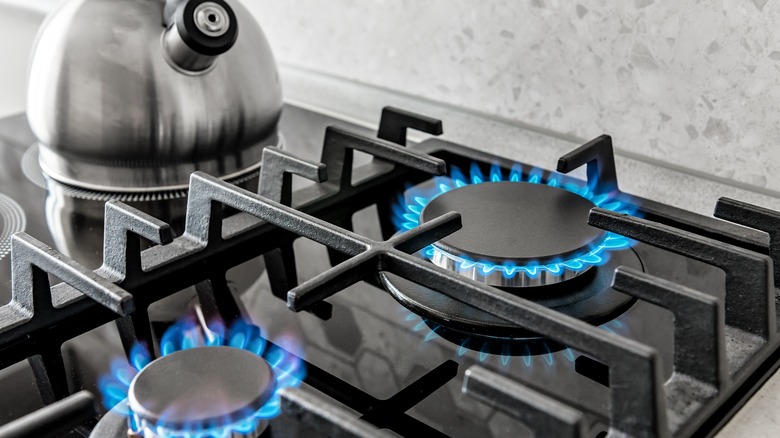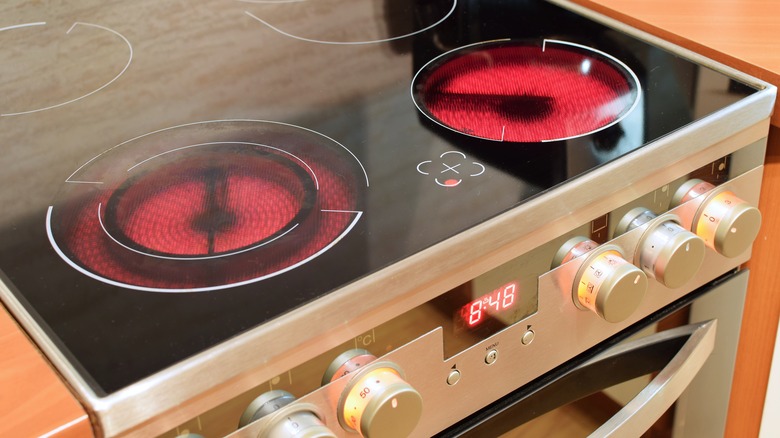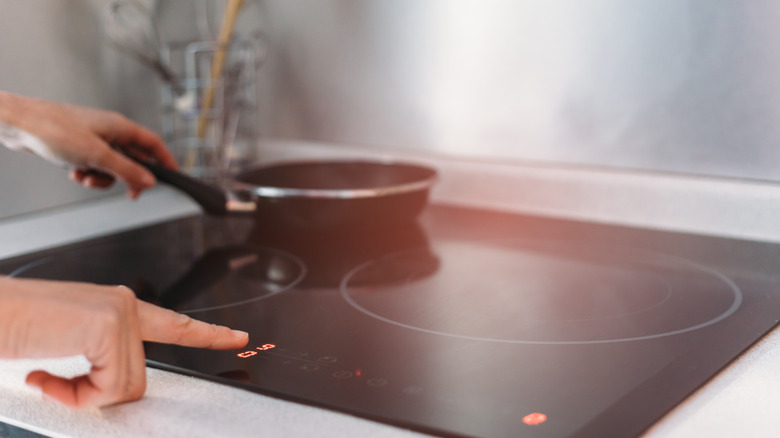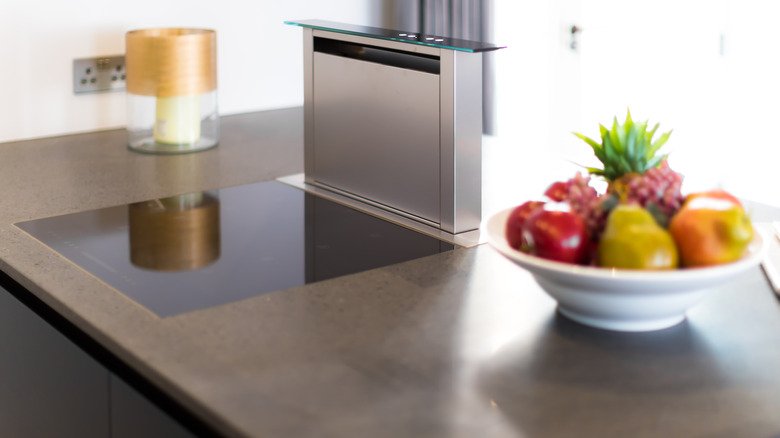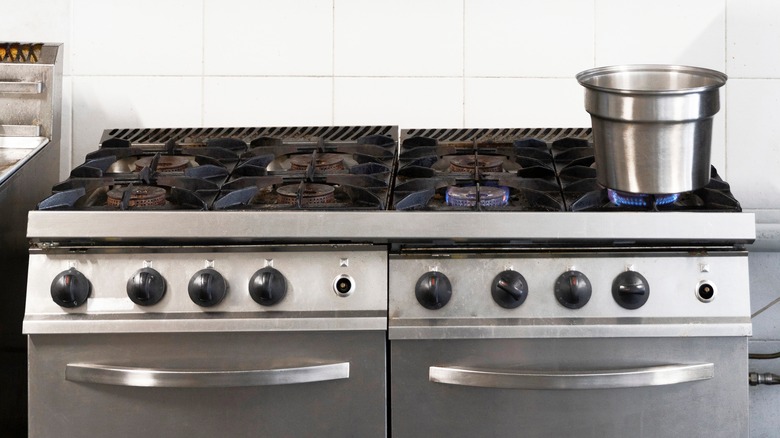The Difference Between Various Stove Types & Which Are Best For A Tight Budget
We may receive a commission on purchases made from links.
Shopping around for a new stove can be hard when you're on a tight budget. You don't want to skimp out on quality kitchen appliances, but you also don't want to break the bank. The average stove ranges between $600 and $1,300. Fortunately, there are affordable stoves out there depending on the type, size, and brand you choose. It's also important to determine if you need a full range (which includes an oven) or just a cooktop. Both options are available individually, and if a standalone cooktop is all you need, it can be much cheaper. For example, an amzchef electric cooktop can be purchased from Amazon for $369.99.
The most common types of stoves are electric and gas, as you probably know. There are also newer induction stoves, and you can even find unique variations like downdraft and commercial-style stoves. The main difference between these stoves is how they get hot: gas stoves use gas to ignite a flame, and electric stoves use electric coils. Induction stoves use electromagnetic energy to generate a current that cooks your food. Still scratching your head about stove shopping? Here's a full breakdown of each of the most common stove types as well as some tips on choosing what's right for your budget.
Gas stoves
Gas stoves have been around for ages, using either propane or a natural gas to make an open flame for cooking. These stoves also heat up pretty quickly, which is great if you like having more control over the temperature. Gas stoves are efficient and tend to cost less per month in utilities. Although gas stoves do not require electricity to heat your food, most modern gas cookers require an electric spark to ignite the gas flame, so if you're living off the grid, you may want to consider a no-frills propane oven or a wood stove.
Gas stoves do have a few downsides though if you are on a budget. Although they can be more efficient in the long run, they tend to have a higher upfront cost than electric stoves. This is due to installation fees, where HomeGuide says you could spend on average $2,000 to connect a new natural gas line for it. Keep this in mind as you tally up the costs for your new purchase.
Electric stoves
Electric stoves run completely on electricity and are generally safer to use than gas stoves, since there's no risk of gas leaks or fires. They're also easier to install compared to gas stoves (no gas connection needed, just an outlet), they can be purchased for less money on average, and they are the more popular option in most homes, according to Statista. Additionally, it's fairly easy to find an affordable portable electric cooktop like for a tiny house where traditional ovens aren't ideal. This two-burner model by Cuisinart is just over $79 on Amazon.
There are few downsides of electric stoves. Budget-wise, remember that these do connect to your electricity, so you have to be mindful of the amount of energy they consume. Fortunately, you can find energy-efficient electric stoves. Those that are EnergyStar certified are 18% more efficient than standard models, according to EnergyStar. Additionally, glass cooktops can become scratched and gouged by dried-on food and wear. Having a professional buff out the scratches on your cooktop may cost upwards of $100-$300.
Induction stoves
An induction stove is a relatively new stove type that's making a name for itself. It uses electromagnetic fields to heat cookware directly, rather than heating the cooking surface itself. Not only does this heat your food fast, but also quickly cools the surface when cookware is removed. The surface top of induction stoves is made from easy-to-clean ceramic glass. The technology behind this stove type makes it a much safer option to use and have in your home than standard electric and gas stoves. That said, an induction stove isn't without its drawbacks.
While induction stoves are more energy-efficient than the others, they're also generally the most expensive options, primarily because of their electromagnetic base. The average induction stove is significantly more expensive than a comparable electric model. Also, not all cookware is compatible with it — induction stoves need specialized pots and pans designed for the magnetic field. Purchasing this unique cookware, of course, means more spending on your end. However, if you're looking for a long-term investment to increase the value of your home, a fancy induction cooktop might appeal to some buyers.
Downdraft stoves
If you're working with a small kitchen, or simply don't like the look of an exhaust hood in the overhead space, you may want to check out a downdraft stove. This type of stove features a unique, built-in ventilation system that draws the fumes and odors from cooking downward, rather than upward through a traditional hood. This style can add an attractive, sleek look in a modern kitchen, not to mention space-saving, especially if you're considering installing a stovetop in your kitchen island. The ventilation style is available in standalone cooktops, too, so you can choose what works best for your kitchen design.
A traditional vent, for either your gas or electric stove, is likely cheaper and more effective. Downdraft vents aren't as effective at capturing smoke and fumes as traditional overhead hoods. This stove style can be harder to install than others, where you may need to hire professional assistance to ensure ventilation works properly in your kitchen. The labor alone can be prohibitively expensive. Finally, downdraft stoves have limited styles and designs compared to stoves with traditional exhaust hoods.
Commercial-style stoves
Last but not least are commercial-style stoves, which you can expect from the name, are designed for high-performance cooking. These can be a great investment if you're a serious home chef or cook for a large family, as they're inspired by professional stoves in restaurant kitchens. Commercial-style stoves are generally larger and equipped with premium features like multiple burners and versatile cooking options. They're especially designed to handle large quantities of food and intense cooking (and to host your own version of Hell's Kitchen at home, of course).
However, as with the other stove types, the commercial-style has shortcomings. This stove is generally more expensive than residential versions, of course, due to their upscale design and performance. This JANSKA commercial-style stove from The Home Depot, for example, costs $2,640, well above the average price range for a stove. Also since this stove type is very large, it'll require more space in your kitchen — something to think about when designing a new kitchen. More importantly, commercial-style stoves are indeed gas stoves, which come with the same risks as mentioned earlier.

